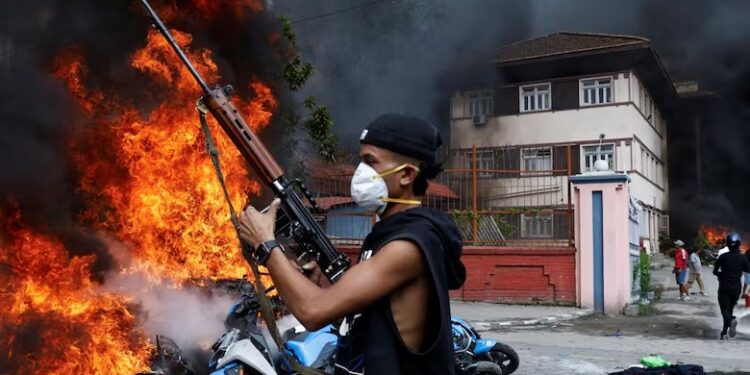Nepal is grappling with mounting political instability, worsening economic pressures, and growing public discontent as its fragile coalition government struggles to deliver reforms. The Himalayan nation, already battered by inflation and a downturn in tourism, is now facing renewed street protests and calls for fresh elections.
Political paralysis at the centre
Nepal’s ruling coalition, led by Prime Minister Pushpa Kamal Dahal, has been weakened by infighting among its main parties and disputes over power-sharing arrangements. Rival blocs in parliament have repeatedly blocked key legislation, including budget measures aimed at tackling the fiscal deficit and reforms to attract foreign investment.
The stalemate has left governance paralysed, with frequent cabinet reshuffles and short-lived alliances further eroding public confidence. Analysts warn that the persistent instability risks undermining Nepal’s fragile democratic institutions, which have struggled to find stability since the monarchy was abolished in 2008.
Economic strain hits households
The political turbulence coincides with serious economic challenges. Inflation remains above 7%, driven by food and fuel prices, while remittance inflows – a lifeline for millions of Nepali households – have slowed amid global uncertainty.
Tourism, once a cornerstone of Nepal’s economy, has yet to fully recover from the COVID-19 pandemic, with visitor numbers still below pre-2020 levels. At the same time, the government faces growing difficulty servicing its external debt, particularly on infrastructure loans tied to major road and energy projects.
Public frustration spilling onto streets
Public anger is rising as living costs soar and jobs remain scarce. Protests have erupted in Kathmandu and other cities, with demonstrators demanding lower fuel prices, stronger anti-corruption measures, and accountability from political leaders. Student groups and trade unions have joined the unrest, calling for broader systemic change.
Civil society groups say corruption and inefficiency continue to drain resources, while youth migration out of Nepal accelerates as young workers seek better opportunities abroad.
Regional and international implications
Nepal’s instability carries wider implications for South Asia. The landlocked country sits strategically between India and China, both of which are competing for influence through infrastructure investment and trade ties. Instability in Kathmandu could complicate regional projects and slow cross-border cooperation.
International lenders, including the IMF and Asian Development Bank, are closely monitoring the situation, urging fiscal discipline and political stability to avoid further economic deterioration.
Uncertain path ahead
With elections not due until 2027, pressure is building on Prime Minister Dahal to stabilise his coalition and push forward long-stalled reforms. However, opposition parties are calling for an early vote, raising the risk of prolonged political confrontation.
For ordinary Nepalis, the outlook remains uncertain. The combination of political deadlock, economic stress, and social unrest is testing the resilience of one of Asia’s most fragile democracies.
REFH – Newshub, 13 September 2025



Recent Comments